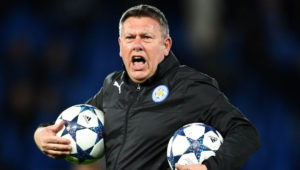Lucas Moura will join Paris St Germain in January for a staggering €45million; here, Damian Kane considers what impact the transfer will have on Brazilian football.
 In 1982 the world of football collectively raised its eyebrows at the £5million fee paid by Barcelona for the services of one Diego Armando Maradona. 30 years later those same eyebrows will surely be raised again with the news that Paris Saint Germain will part with €45million (£35.5million) in a deal that will bring 19-year-old Brazilian Lucas Moura to the club in January 2013.
In 1982 the world of football collectively raised its eyebrows at the £5million fee paid by Barcelona for the services of one Diego Armando Maradona. 30 years later those same eyebrows will surely be raised again with the news that Paris Saint Germain will part with €45million (£35.5million) in a deal that will bring 19-year-old Brazilian Lucas Moura to the club in January 2013.
The transfer of Moura has been a protracted affair with it looking likely that he would be plying his trade this season at Manchester United, who it has been reported were willing to pay as much as £30million for the teenager, whilst Internazionale were keen to lure him to Italy.
Inter were put off by the price being asked by Sao Paulo, the players current club; United, it would seem, were still hopeful of coming to an agreement to secure the players signature. But all that changed when cash-rich, big-spending PSG decided they wanted Lucas to be their player. Sir Alex Ferguson, the Reds manager, admitted defeat, saying: “I find it quite amazing that a team can spend €45million for a 19-year-old boy.”
The deal, which will make Moura the most expensive teenager in football history, comes just weeks after his compatriot, Oscar, moved from Brazil`s Internacional to Chelsea for a figure that is believed to be in the region of £25million. So it would seem the days of Europe`s big teams plundering Brazil`s best players for relatively small fees, like the €5million that took Ronaldinho to Paris in 2001, are well and truly over. With a trend-bucking economic boom currently being enjoyed in Brazil, and the fact that it is a nation proud of its football heritage, clubs are not in a position where they have to offload players to balance the books as they once were and are willing to hold on to their star players unless their valuations are met.
Brazilian football is as strong now as it has been for quite a while, and Brazil wants this to continue. Even though the return of Ronaldinho to Brazil’s biggest club, Flamengo, was a disaster, the fact that world stars, albeit ageing world stars, are willing to play here such as Juninho at Vasco da Gama, Deco at Fluminense along with Clarence Seedorf`s move to Botafogo, all of whom could have chosen to stay in Europe, are viewed as signals of the s growing strength in the league. Couple that with the fact that it would seem the biggest star in Brazilian football, Neymar, is happy to stay at Sao Paulo-based Santos, where his package at the club puts him on par with Europe’s top earners, and with the city also boasting the current Libertadores champions in Corinthians it appears that the game here will continue to go from strength to strength.
The height of Brazil`s last economic boom was in 1970, which was also the year of the countries third World Cup triumph and is a period referred to fondly as Brazil`s miracle. With the World Cup being contested here in 2014 and the current crop of Brazilian under-23`s set to compete for their first Olympic Gold Medal for football in a few days time, a team which it should be said €45million man Moura has struggled to get into, could we see the Brazilian national team become World Champions for a record sixth time? This would be the first time on home soil, after being beaten in the final the last time the championships were held here in 1950 by neighbours Uruguay, perhaps the darkest day in Brazilian football history.
Only the future will tell if the fee paid by PSG for Lucas or that of Chelsea for Oscar will be a gamble worth taking, and one can only imagine how this affects any possible transfer fee someone would have to come up with to have the name Neymar grace their teamsheet, but it`s a pretty safe bet that the strength of the Brazilian league will continue to bloom. Indeed it seems the conveyor belt of talent continues to produce with the recent emergence on the scene of 21-year-old Corinthians striker Romarinho (Little Romario), who became an instant hero scoring twice on his debut in the local derby against Palmeiras and three days later came off the bench to score the equaliser in the first leg of their Libertadores victory over Argentina’s Boca Juniors.
So while the figure of €45million for a somewhat unproven 19-year-old boy may be greeted with dismay by Sir Alex Ferguson and the rest of the European establishment, and the fact it may well be slightly inflated by the fact that PSG have owners that don’t view money as an object, amongst Brazilians it is seen as a symbol of growing strength in their own position in world football and it would seem that growth is set to continue at least until 2014 and maybe beyond.
*Damian Kane is a freelance journalist based in Brazil. For his take on Neymar, check out: http://takefootball.co.uk/?p=1381 You can find Damian on Twitter here: https://twitter.com/DamianKane79
Follow takefootball on twitter!

